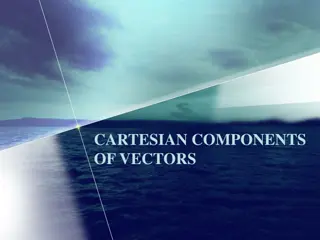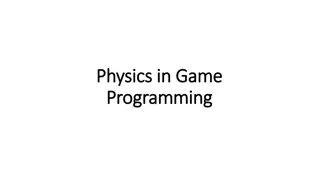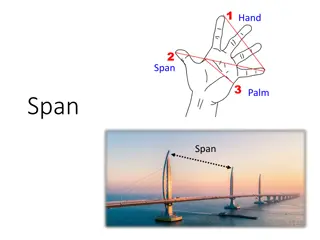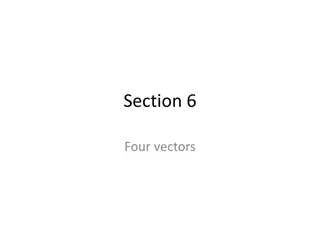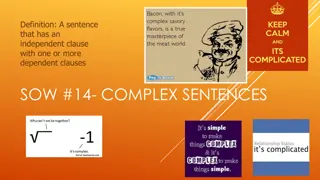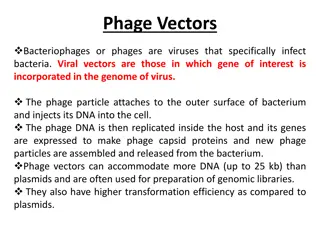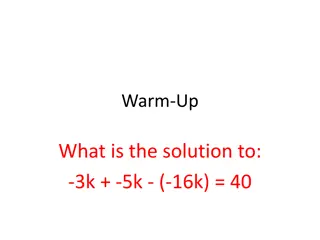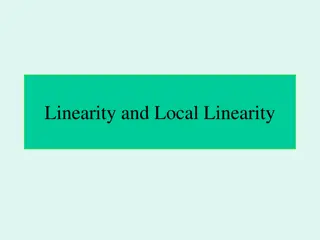Understanding Linear Dependent and Independent Vectors
In linear algebra, when exploring systems of linear equations and vector sets, it is crucial to distinguish between linear dependent and independent vectors. Linear dependence occurs when one vector can be expressed as a combination of others, leading to various solutions or lack thereof in the given system. This concept plays a fundamental role in determining the solutions of a system of linear equations.
Download Presentation

Please find below an Image/Link to download the presentation.
The content on the website is provided AS IS for your information and personal use only. It may not be sold, licensed, or shared on other websites without obtaining consent from the author. Download presentation by click this link. If you encounter any issues during the download, it is possible that the publisher has removed the file from their server.
E N D
Presentation Transcript
How many solutions? Hung-yi Lee
Reference Textbook: Chapter 1.7
Given a system of linear equations with m equations and n variables Review ? ??? ?? ?:? ? Is ? in the span of the columns of ?? Is ? a linear combination of columns of ?? YES NO No Have solution solution How many solutions?
Given a system of linear equations with m equations and n variables Today ? ?? ? ?? ?:? ? Is ? in the span of the columns of ?? Is ? a linear combination of columns of ?? YES NO The columns of ? are independent. The columns of ? are dependent. No solution Rank A = n Rank A < n Nullity A = 0 Unique solution Nullity A > 0 Infinite solution Other cases?
() Dependent and Independent ( )
Definition A set of n vectors ?1,?2, ,?? is linear dependent If there exist scalars ?1,?2, ,??, not all zero, such that ?1?1+ ?2?2+ + ????= ? Obtain many Find one A set of n vectors ?1,?2, ,?? is linear independent ?1?1+ ?2?2+ + ????= ? Only if ?1= ?2= = ??= 0 unique
Dependent and Independent Linear Dependent Given a vector set, {a1, a2, , an}, if there exists any aithat is a linear combination of other vectors 4 12 6 10 30 15 Dependent or Independent? , 7 6 3 3 1 8 3 , , Dependent or Independent? 11 6
Dependent and Independent Linear Dependent Given a vector set, {a1, a2, , an}, if there exists any aithat is a linear combination of other vectors Dependent or Independent? Zero vector is the linear combination of any other vectors Any set contains zero vector would be linear dependent How about a set with only one vector?
Dependent and Independent Linear Dependent Given a vector set, {a1, a2, , an}, if there exists any aithat is a linear combination of other vectors 2??+ ??+ 3??= ? 2??+ ??= 3?? 2 3 ?? = 3?? + 4?? ?? 3?? 4?? = ? ??+ 1 ??= ?? 3 Given a vector set, {a1, a2, , an}, there exists scalars x1, x2, , xn, that are not all zero, such that x1a1+ x2a2+ + xnan= 0.
Dependent: Once we have solution, we have infinite. Intuition Intuitive link between dependence and the number of solutions 6 1 7 3 8 11 3 3 6 ?3 12 6 3 3 3 6 6 3 3 3 12 ?1 ?2 7 6 3 3 1 8 3 14 22 1 + 1 = 11 6 = ?1 ?2 ?3 7 1 1 1 1 8 14 22 12 = 1 + 1 + 1 = 11 ?1 ?2 ?3 1 8 14 22 2 2 0 Infinite Solution 2 + 2 = =
Proof Columns of A are dependent If Ax=b have solution, it will have Infinite Solutions If Ax=b have Infinite solutions Columns of A are dependent
Proof Homogeneous linear equations ?1 ?2 ?? ?? ? = ?1 ?2 ?? = ? ? = (always having ? as solution) Based on the definition A set of n vectors ??,??, ,?? is linear dependent ?? = ?have non- zero solution infinite A set of n vectors ??,??, ,?? is linear independent ?? = ?only have zero solution
Proof Columns of A are dependent If Ax=b have solution, it will have Infinite solutions We can find non-zero solution u such that ?? = ? ? ? + ? = b ? + ? is another solution different to v There exists v such that ?? = b If Ax=b have Infinite solutions Columns of A are dependent ?? = b ?? = b ? ? ? = ? Non-zero ? ?
Rank and Nullity The rank of a matrix is defined as the maximum number of linearly independent columns in the matrix. Nullity = Number of columns - rank 3 7 0 2 9 0 1 0 2 1 2 3 3 6 9 10 20 30 0 0 0 0 0 0 0 0 0
Rank and Nullity The rank of a matrix is defined as the maximum number of linearly independent columns in the matrix. Nullity = Number of columns - rank 1 2 3 6 4 8 0 0 3 5 5 2 6
Rank and Nullity The rank of a matrix is defined as the maximum number of linearly independent columns in the matrix. Nullity = Number of columns - rank If A is a mxn matrix: Rank A = n Columns of A are independent Nullity A = 0
Conclusion ? ?? ? ?? ?:? ? Is ? in the span of the columns of ?? Is ? a linear combination of columns of ?? YES NO The columns of ? are independent. The columns of ? are dependent. No solution Rank A = n Rank A < n Nullity A = 0 Unique solution Nullity A > 0 Infinite solution
Conclusion The columns of ? are independent. ?:? ? ? ??? ?? Rank A = n Nullity A = 0 NO YES Is ? a linear combination of columns of ?? Is ? a linear combination of columns of ?? Is ? in the span of the columns of ?? Is ? in the span of the columns of ?? NO No YES NO No YES Unique solution Infinite solution solution solution
Question True or False If the columns of A are linear independent, then Ax=b has unique solution. If the columns of A are linear independent, then Ax=b has at most one solution. If the columns of A are linear dependent, then Ax=b has infinite solution. If the columns of A are linear independent, then Ax=0 (homogeneous equation) has unique solution. If the columns of A are linear dependent, then Ax=0 (homogeneous equation) has infinite solution.






